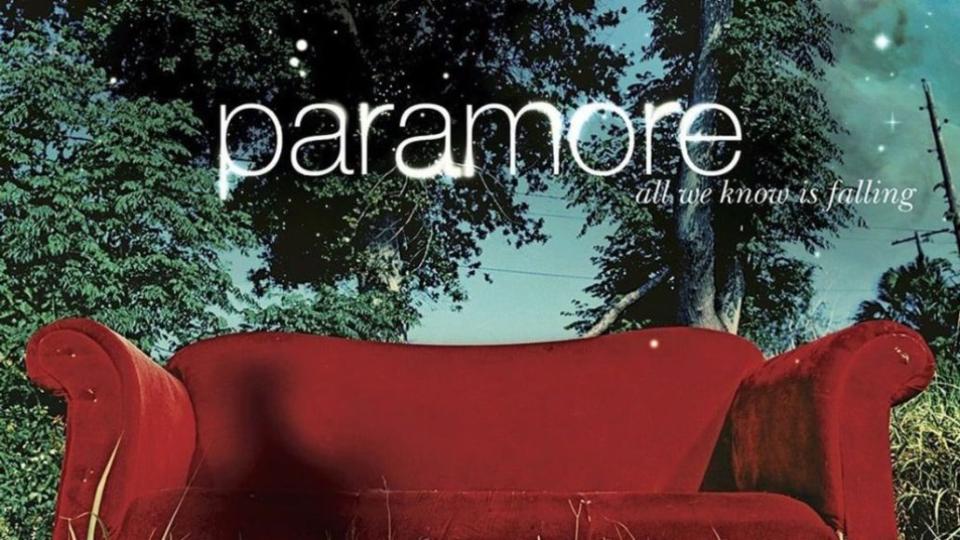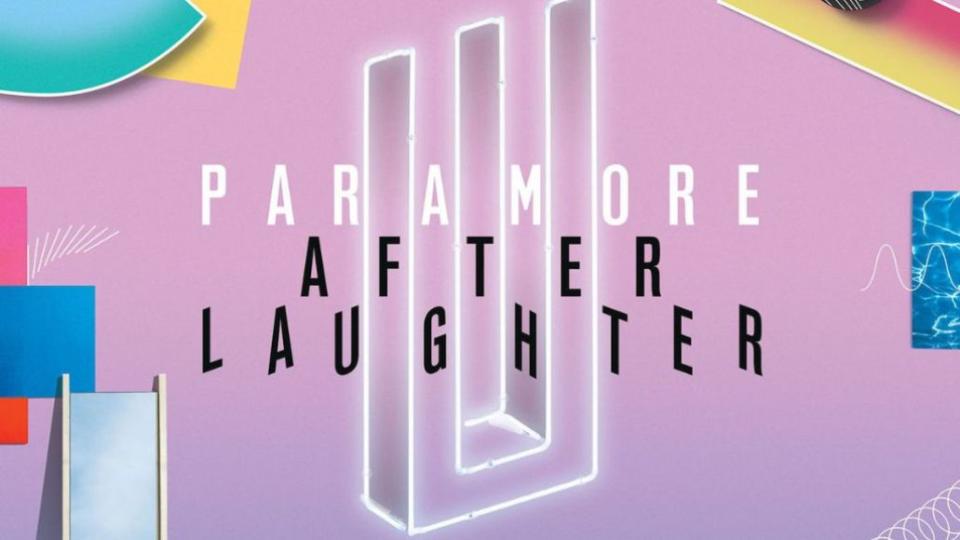A Definitive Ranking of Every Paramore Album
- Oops!Something went wrong.Please try again later.
- Oops!Something went wrong.Please try again later.
- Oops!Something went wrong.Please try again later.
The post A Definitive Ranking of Every Paramore Album appeared first on Consequence.
Welcome to Dissected, where we disassemble a band’s catalog, a director’s filmography, or some other critical pop-culture collection in the abstract. It’s exact science by way of a few beers. This time, we sort through the best and worst of the lauded Nashville trio.
When a group of teenage boys started a band in Franklin, Tennessee in 2003, they stumbled upon a secret weapon, who had just happened to sign a solo deal with Atlantic Records: Hayley Williams. Though they all could have easily served as Williams’ backing band, they opted for the more unified approach of just being a rock band.
But Paramore were never just a rock band. Even in their early days of Warped Tour treks and shopping mall-core aesthetics, they were phenomenal musicians, led by a tour-de-force vocalist whose soaring soprano would become instantly recognizable in just a few years. When their lineup crystallized in 2007 with Williams, the Farro brothers on guitar and drums, bassist Jeremy Davis, and rhythm guitarist Taylor York, they released Riot!, a breakout album that saw the band trading pop punk scene notoriety for a much larger audience.
There was a significant shift after the band’s excellent third album, Brand New Eyes — citing some pretty major frustrations, Josh and Zac Farro abruptly left the band, and Paramore carried on as a trio with their 2013 self-titled album. They returned in 2017 with the new wave-influenced After Laughter, only this time, Zac Farro had rejoined the band, and Davis had departed.
And now, in 2023, we have yet another standout entry in Paramore’s extensive catalog: This Is Why. The album may not reach the heights of some of their earlier works, but it is appropriate cause for a revisit of the band’s discography.
Paramore’s 10 Best Songs
From the youthful glow of All We Know Is Falling to the existential post-punk of This Is Why, we’ve dissected all of Paramore’s six albums and ranked them accordingly. After all, few bands have managed to pull off the kind of stylistic evolution that Paramore have, so… let the flames begin.
— Paolo Ragusa
Editorial Coordinator
Ed. note: Catch Paramore on tour in 2023; tickets are available here.
06. All We Know Is Falling (2005)

How Did We Get Here? (Mood): There’s certainly a more scrappy sound on Paramore’s debut album, but that doesn’t mean the songwriting isn’t sharp; All We Know Is Falling is the band attempting to figure out how to stand out from the pack of similarly colorful pop-punk bands in the mid aughts. From the very beginning, it’s clear that they possessed a vocalist that was just as adept as Avril Lavigne or Kelly Clarkson, but had a lot more to say about the anxiety of youth than many would give her credit for.
You Hit Me With Lightning (Catchiest Chorus): “Pressure” was Paramore’s breakthrough song, and its soaring pop-punk chorus still hits.
That’s What You Get (Standout Lyric): Williams begins the mid-album cut “Never Let This Go” with the aching couplet: “Maybe if my heart stops beating, it won’t hurt this much/ And never will I have to answer again to anyone.” If it seems dramatic, it’s because it is — but this was just the beginning of Williams turning her anguish into something concretely familiar.
The Only Exception (Most Underrated Track): “Conspiracy” is perhaps the most dynamic offering on All We Know Is Falling, complete with influences from post-rock, stadium-sized alternative, and of course, emo.
Riot! (Best Live Song): From their very first Warped Tour to arenas, “Pressure” lived to see multiple different eras of Paramore tours, and it’s a standout live offering from the whole band.
This Is Why (General Analysis): Paramore began laying some impressive groundwork on All We Know Is Falling, but their follow-up, Riot!, seemed to capitalize on all the most successful parts. The drums and guitars are suitably gigantic, and they help lift William’s sharp vocals to tantalizing heights. But given the more nuanced language that the band began to adopt as they got older, All We Know Is Falling still lives in that uniquely 2005 moment where the oversaturated pop-punk scene had begun to wear thin. Besides Williams’ excellent vocals and Zac Farro’s remarkable abilities behind the drum kit, there wasn’t enough to the album’s 10 songs to catapult Paramore away from their contemporaries.
— P.R.
05. This Is Why (2023)

How Did We Get Here?: Think of This Is Why as something of a middle ground in the band’s discography. Paramore don’t try to return to their edgiest roots with their 2023 release, but they also don’t break new ground here — the album is overall contemplative, fairly energetic, and even a bit risky in how restrained it is.
You Hit Me With Lightning: The chorus to the album’s title track lodges its way in the listeners head and sets up shop, only to appear at the most unexpected of times. You’ll catch yourself days after playing the song, walking around while doing chores, singing, “This is why I don’t leave the house,” under your breath.
That’s What You Get: “Don’t mean to stare at you from across the room/ It’s like I’m glued to the sheer sight of you,” from “Big Man, Little Dignity” is so piercing, even in its simplicity.
The Only Exception: Far and away, the sneakiest track on the album is “Thick Skull.” It has engaging songwriting and an odd, off-kilter kind of vibe; there’s something very intimate about “Thick Skull,” and it’s one people aren’t talking about enough.
Riot!: While we haven’t seen the entire album onstage, the energy of “C’est Comme Ca” is hard to beat.
This Is Why: Now that we’ve all had a chance to sit with This Is Why, there’s a sense that it probably won’t go down in history as one of Paramore’s most impactful albums. There’s so much to love about this record, but its impact isn’t as strong as so many of the other collections on this list. We have to tip our hats to Paramore, though, because while it would have presumably been very easy for them to dive back into their most familiar lanes, they worked to do something that better reflected their energy in the present.
— Mary Siroky
04. Paramore (2013)

How Did We Get Here?: Paramore is the first album the band released following the dramatic departures of founding members Zac and Josh Farro (Zac would later return to the band prior to the release of After Laughter), and as such, carries a sense of refresh for the band, now whittled down to Williams, Davis, and York. Its self-titled nature was a proclamation as they dealt with their new identity, left to reckon with who, and what, Paramore truly represented. This coincided with the band embracing a more experimental approach to their sound, toying with New Wave, funk, and synth-pop while still retaining their signature pop-punk core.
You Hit Me With Lightning: Lyrically, Paramore are never afraid to go into the darker corners of the human psyche, but Williams is also just damn good at writing the perfect pop song. The infectious “Still Into You” is an open-hearted, no-holds-barred declaration of love — and the mystifying, dizzying sensation about how affection for someone just doesn’t seem to fade overtime: “Let ’em wonder how we got this far/ ‘Cause I don’t really need to wonder at all/ Yeah, after all this time, I’m still into you.” It’s the kind of chorus you can’t just not totally belt.
That’s What You Get: Williams grew up in the public eye, and has been famous since she was a teenager. Williams was an inspiring female figure amid a male-dominant pop-punk scenes, and influenced a whole generation of female musicians — but this kind of pressure is hard to weather day-to-day, especially as she herself was specifically targeted by both Farro brothers as the reason for leaving. Sometimes, the burden is just too much, as Williams reflects in “Anklebiters”: “Why you wanna please the world and leave yourself to drop dead?”
The Only Exception: Williams has often written about her difficulties believing in love, and “Proof” describes her full acceptance of a new romance — in this case, New Found Glory’s Chad Gilbert — and her intentions of wanting to be less of a cynical realist with her approach. Taking the plunge is always scary and invites potential heartbreak, but it’s something to enjoy in the moment — at least, according to Williams.
Riot!: The sarcastically-titled “Ain’t It Fun” might be about Williams’ anxieties and insecurities about moving from Nashville to L.A., but its lyrical themes are in direct contradiction to the song’s joyous, funk-inspired production. During live shows — especially recent ones — Williams performs this song as the ultimate catharsis, and the inclusion of the gospel choir makes it the ultimate soul-cleanser of a song: “Don’t go crying to your mama’/ ‘Cause you’re on your own in the real world.
This Is Why: Paramore marks the start of the band toying with their musical evolution, unafraid to explore sonic territories and pushed beyond their capabilities as a pop-punk band. The group were emotionally wrought following the Farros’ departure, but it allowed the freedom to reinvent themselves into something on their own terms. It hints at their willingness to reshape the idea of what a guitar band really can be, and the synth-pop inspired musicalities of the record served as a precursor of what was to come with their subsequent effort, After Laughter. If After Laughter is Paramore at their most risk-taking, adventurous selves, Paramore was definitely the lead-up to it.
— Cady Siregar
03. Riot! (2007)

How Did We Get Here?: Riot! is the type of snappy, caffeinated pop punk Warped Tour dreams were made of. Paramore’s sophomore album saw the band really start to figure out what worked best for them: Melancholy drenched in hooks and ear-splitting guitar riffs. It’s the sweet spot between proving to your parents that no, it isn’t just a phase, without worrying them so much they confiscate your Limewire-indebted iPod.
You Hit Me With Lightning: The chorus of “That’s What You Get” almost feels like it was conceived with the sole purpose of becoming Paramore’s then-biggest hit, which would make us feel a little jaded if their outcome wasn’t so damn effective. Simple enough to memorize in just one listen without growing stale too quickly, we’ll happily let “That’s What You Get” win our hearts time and time again. Whooooaohh-ohhh-ohhh!
That’s What You Get: Before she was old enough to even legally order a beer, Hayley Williams knew that continuing to front Paramore would come at the expense of her privacy. Through the slightly country-Western shuffle of “Fences,” she envisions herself on display for everyone to see and dreams of isolating herself: “I’d show you how to build your fences, set restrictions/ Separate from the world.” Thank goodness Williams learned how to pour her heart out without ever letting it get too empty.
The Only Exception: There’s a reason why Paramore reprised “Let the Flames Begin” six years later (as “Part II” on their self-titled): It rips. It’s one of the few Paramore songs whose instrumentals — in this case, Zac Farro’s pummeling drums — almost outshine Williams’ vocals, though her rallying cry in the chorus is still powerful enough to conjure goosebumps on its own.
Riot!: “Born for This” features a blink-and-you’ll-miss-it interpolation of Swedish punks Refused, and although Riot! as a whole leans more commercial, its closing track makes Paramore’s hardcore foundations evident. Even if it weren’t for the slightly gimmicky group vocals, “Born for This” live is perhaps the best testament to Paramore’s contagious adrenaline and Williams’ commanding, yet welcoming stage presence. Who cares if the “we were born for this” chant was contrived just for audience participation? By the time those lyrics arrive, you’re already convinced the sentiment is true.
This Is Why: Think of all the other pop-punk albums that came out in 2007; at the time, plenty of Paramore’s peers were releasing the records that would mark their all-time career peak, or prove that they’d already surpassed it. Riot! certainly isn’t Paramore’s best album, but it was an important warm-up round, a springboard towards all iterations of the band to follow as they evolved. Riot! might still sound best blasting through speakers at a Hot Topic in 2008, but it also reminds us that Paramore are easily one of the most impactful and enduring pop-punk bands of their time.
— Abby Jones
02. Brand New Eyes (2009)

How Did We Get Here?: Paramore’s third album arrived at a crucial turning point in their career. They were tasked with replicating the massive success of their previous album, Riot!, which was no easy feat — but luckily, Paramore are always up for a challenge. Brand New Eyes is certainly a more “challenging” album from the band: there are big, enveloping questions about faith (and the lack thereof), turmoil, and lapses in relationships. Produced by the band and veteran rock connoisseur Rob Cavallo, the band dialed up their anxious pop-punk to a widescreen view, offering even more intensity than anyone might have expected from a Top 40-charting rock band.
You Hit Me With Lightning: Paramore put their best foot forward by releasing “Ignorance” as Brand New Eyes‘ first single. Williams ascends to some baffling notes on the chorus, shrieking, “You treat me just like another stranger,” with palpable confusion, shock, and disillusionment.
That’s What You Get: On “Brick By Boring Brick,” Williams lays down a powerful thesis that, in context, seems to encompass her move away from Christianity: “If it’s not real, you can’t hold it in your hand/ You can’t feel it with your heart/ And I won’t believe it/ But if it’s true, you can see it with your eyes/ Oh even in the dark/ And that’s where I want to be, yeah.” It’s illuminating to hear how embattled she is in determining what’s real, what’s fictional, what’s wishful thinking, and what’s actually bound to happen.
The Only Exception: “Playing God” deftly skewers a gaslighting tyrant, but the band finds a way to imbue some levity to it. When Williams rattles through the chorus, singing “Next time you point a finger/ I might have to bend it back and break it, break it off,” the frustration is real, but there’s still an element of playfulness to her melody that draws you in. Not only that, the imagery of power and command in a relationship — which she likens to “playing God” — falls perfectly in Williams’ sentiments about refusing the absolute nature of religion, and, well, anyone.
Riot!: Of course, “Ignorance” is a memorable live cut for anyone whose seen Paramore. But now that the band has decided to include “All I Wanted” in their recent setlist, it’s become a powerful and relevant example of Williams’ stunning vocal prowess.
This Is Why: Brand New Eyes becomes all the more impactful when you realize where Hayley Williams was emotionally during the album’s creation, and what it led to afterwards. Though their music was certainly secular, religion played a huge part in both Williams and the Farro brothers upbringing. After Riot!, the band was struggling with some internal issues, and after Brand New Eyes‘ release, those issues came to a head — Josh Farro cited differing opinions on faith and Paramore’s lyrics as a primary catalyst for him and his brother to leave the band.
And when you hear the lyrics to songs like “Brick By Boring Brick,” “Playing God,” and “Careful,” it’s clear that Williams was experiencing a personal crisis of faith. As a result, these songs are more grounded and challenging than the band had ever created, and it remains one of their most comprehensive and personal offerings to date.
— P.R.
01. After Laughter (2017)

How Did We Get Here?: After yet another lineup change and more personal turmoil, Paramore almost called it quits as a band, but the return of Zac Farro into the fold made them stronger than ever. With Taylor York and Farro pushing its sonic direction, After Laughter represented the group’s most drastic departure from their pop-punk origins as they fully embraced a sound combining ’80s new wave and synth-pop — though Williams’ lyrics contained just as much angst as Paramore’s earlier discography.
You Hit Me With Lightning: The chorus of “Hard Times” embodies the group’s edict for the album: “Cry hard, dance harder.” Confronting Williams’ depression, the lyrics are full of shared catharsis for the powerhouse vocalist and fans alike. Lines like “And I still don’t know how I even survive” are a rallying cry when times are tough and hope is all you have.
That’s What You Get: On “Rose-Colored Boy,” Williams sings, “Just let me cry a little bit longer/ I ain’t gon’ smile if I don’t want to.” Defiant at the surface, the line is also a reminder that it’s okay to wallow in sorrow on occasion. Sometimes getting through the day is more than enough.
The Only Exception: Written about how Williams and Farro were able to pick up their friendship where they left off, “Grudges” is full of nostalgia and optimism. The departure of the Farros after Brand New Eyes always seemed to be driven by Josh rather than Zac, and lyrics like, “Come on, we’ll laugh ’til we cry/ Like we did when we were kids” seem to prove that was the case.
Riot!: “Told You So” immediately grabs your attention from the moment that Williams sings, “For all I know/ The best is over and the worst is yet to come.” York’s tropical guitar riffs and Farro’s New Wave groove are undeniably catchy, prodding even the shyest fans to get on the dance floor.
This Is Why: Life off the road turned out to be the best thing for Paramore. Besides offering them the opportunity for a fresh start, Williams was able to bring new thoughts and experiences into her songwriting, while Farro and York were able to experiment with music outside of the band. With all those factors combined, After Laughter became a major leap for the trio giving only a small taste of what they could accomplish while entering their late twenties. After going through several iterations, Paramore settled into a lineup featuring their strongest bond as friends and musical collaborators. All of this came across in the music, and standout songs like “Hard Times,” “Rose-Colored Boy,” and “Told You So” belong in their setlists for years to come.
— Eddie Fu
Note: You can catch Paramore on tour this year. Grab tickets here.
A Definitive Ranking of Every Paramore Album
Consequence Staff
Popular Posts


